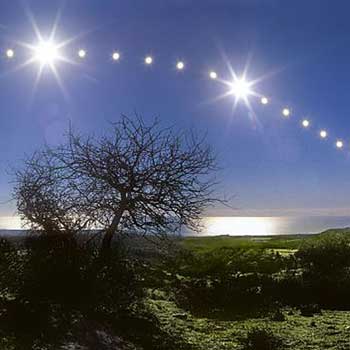
Photo #1 of 5: What season is it? Provide at least two reasons for your answer. Hint: Pay attention to the time on the photo.

Answer
Summer. Photo taken August 3.
Maybe you said it was summer because the boy is wearing shorts and the grass is green. That’s one clue, but there’s another one. The time stamp says it’s 7:30 in the evening. That’s late in the day, way past dinner time -- but it’s still light out and the boy is playing. In summer, the Sun sets later in the day.
Photo #2 of 5: What season is it? Provide at least two reasons for your answer. Hint: Pay attention to the time stamp.

Answer
Fall/Autumn (photo taken September 22)
See the pumpkins? During the summer, when the weather is warm and there’s lots of sunshine, pumpkins grow bigger and gradually ripen. When the pumpkins are orange, we know they are ripe and the season has changed to autumn/fall — a time for jack o’lanterns and pumpkin pie. Another clue is the mist over the field. The time stamp says it’s morning. Mist appears on cool mornings above the ground after it rains. This sign of cool weather also suggests that summer is over.
Photo #3 of 5: What season is it? Provide at least two reasons for your answer. Hint: Pay attention to the time stamp.
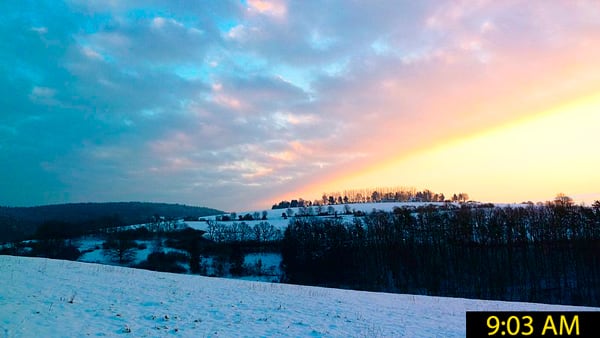
Answer
Winter (photo taken February 10)
The snow is a give away. In many places, the weather is very cold in the winter. Instead of raining, snow falls and covers the ground. But the time stamp gives you another clue. It’s 9:03 in the morning, but the Sun is just coming up. The Sun rises up late on winter mornings and sets earlier. During winter, the daytime is shorter.
Photo #4 of 5: What season is it? Provide at least two reasons for your answer. Hint: Pay attention to the time stamp.
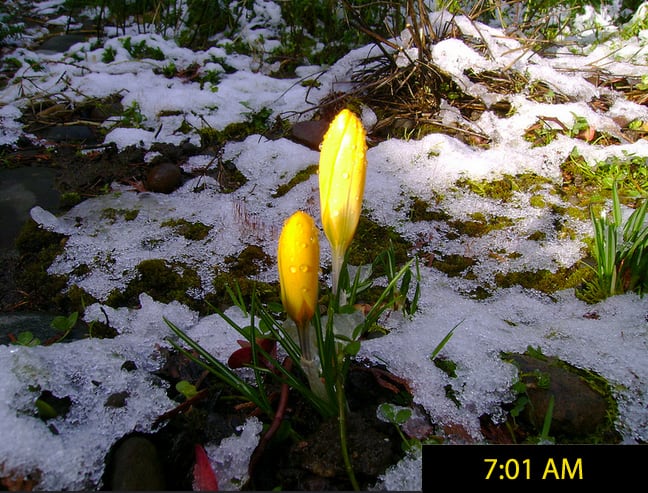
Answer
Spring, Photo taken March 20
Water from melting snow in early spring helps flowers grow. Yellow crocuses like these are one of the first flowers to come up in the spring. Another clue is the time stamp. It’s 7:01 AM in the morning, but the Sun is out early and shining on the snow. Spring marks the end of winter as the days start to get warmer and sunnier.
Photo #5 of 5: What season is it? Provide at least two reasons for your answer. Hint: Pay attention to the time stamp.
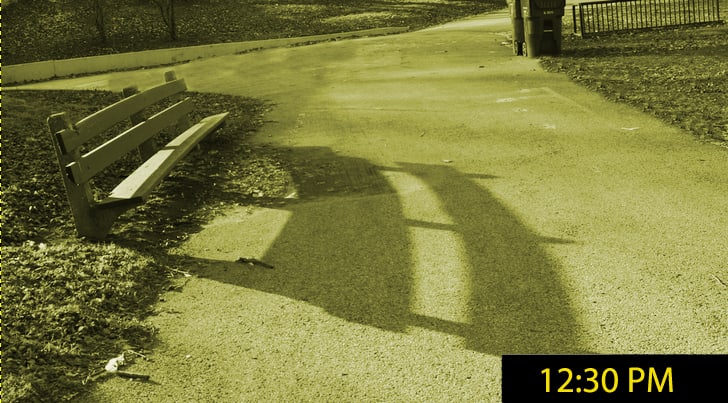
Answer
It turns out it's wintertime. But the reasons for this one are really hard. Rather than giving the reasons now, we’ll come back to them later in the lesson. Next time you see it, you may have some new ideas ...

Discuss: What changes did you see in the daytime sky over the course of the four seasons?
Reveal answer
As we went from spring to summer the path of Sun moved higher and higher in the sky. The Sun rose highest in the sky in summer. Then as we went to fall, the Sun's path got lower and lower. The Sun rose lowest in the sky in winter.

Discuss: Here’s the photo of a bench you saw earlier. Why do you think this photo was taken in winter?
Hint: Look at the shadow.

Reveal answer
The time stamp says the photo was taken in the middle of the day--right around lunchtime. But the bench is casting a long shadow, which tells us that the Sun is behind the bench and very low in the sky. Only in the winter is the Sun low enough in the sky to look like this in the middle of the day.

Discuss: Why does the "slice" of light move slowly each day?
Reveal answer
The slice of light moves because the Sun's path across the sky moves slowly each day.
Discuss: If these rocks were set up on purpose, why do you think the Pueblo people might have done this?
Reveal answer
You might have come up with different answers. Nobody actually knows for sure. The Pueblo people didn't leave any written records.
Here are some ideas scientists have:
1. Maybe they did it for religious reasons.
2. Maybe it helped them know when to plant their crops.
3. Maybe it was a calendar for their town events.

Photo #6 of 9: What season is it? Provide at least two reasons for your answer. Hint: Pay attention to the time stamp. That may give you a clue.
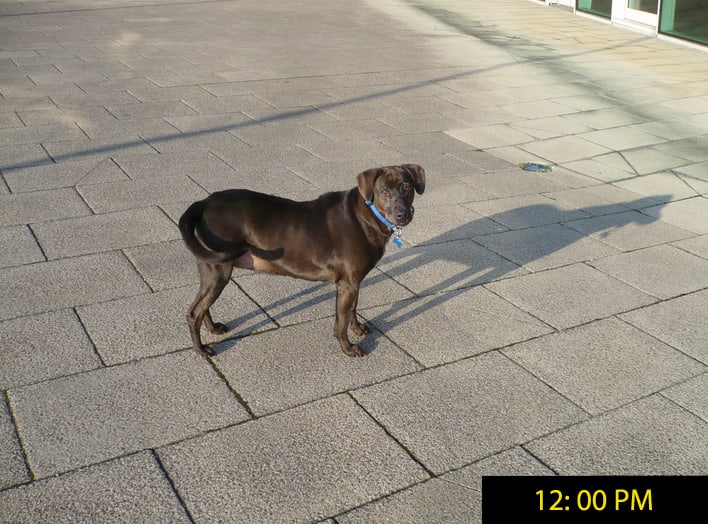
Reveal answer
Winter, photo taken on Dec 23
This photo was taken at noon, but the dog casts a long shadow. That means the Sun was low in the sky. When is the Sun low in the sky at midday? Winter!
Photo #7 of 9: What season is it? Provide at least two reasons for your answer. Hint: Pay attention to the time stamp. That may give you a clue.
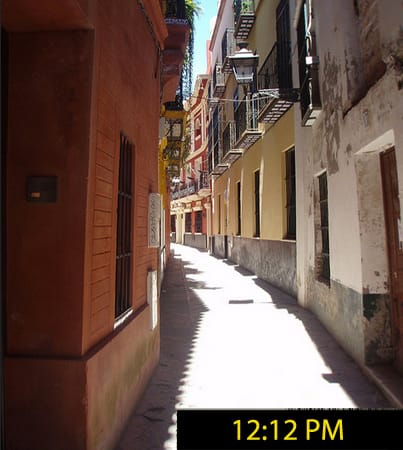
Reveal answer
Summer. Photo taken on July 17
The short shadows show that the Sun is directly overhead. The buildings create a thin space for the Sun to shine through--similar to the dagger of Sun at Chaco Canyon. The time stamp says this photo was taken at lunchtime. Since the Sun is high in the sky at midday, it must be summer.
Photo #8 of 9: What season is it? Provide at least two reasons for your answer. Hint: Pay attention to the time stamp. That may give you a clue.
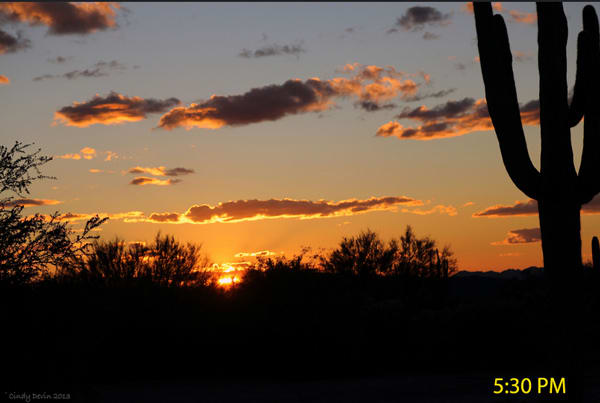
Reveal answer
Winter. Photo taken Jan 3
You can see that the Sun has almost set — nighttime is approaching. But the time stamp says this photo was taken at 5:30 in the afternoon. It's not even dinnertime and it's already dark out! Such an early sunset means it must be winter.
Photo #9 of 9: What season is it? Provide at least two reasons for your answer. Hint: Pay attention to the time stamp. That may give you a clue.
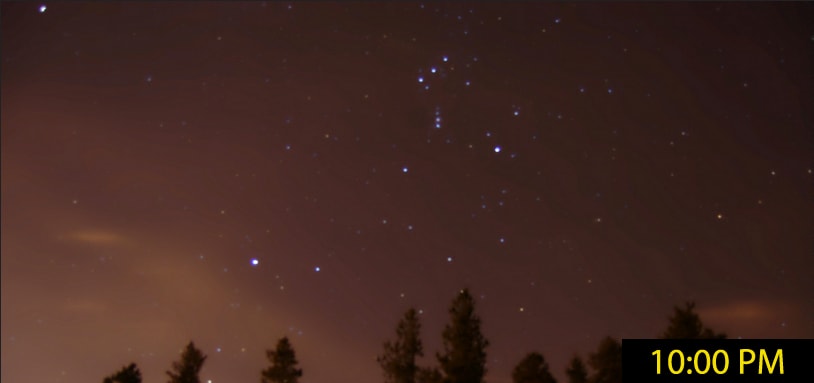
Reveal answer
Winter. This photo was taken Feb 1.
All you can see is the night sky--no Sun, no other clues. Is there any way to tell what season it is? Yes, there is. The stars in the night sky can also tell us about the seasons. We'll find out how next lesson.
Below are ideas for extending this topic beyond the activity & Exploration which you just completed.
- Written Response Questions and Answer Key
- Reading: "How Does a Leaf Know When to Change Color? "
- Activity: Sky Dome, Part 2
- Demo: Mark a Shadow Across Weeks
- Discussion: Spot of Light
Extra Activity: Sky Dome, Part 2
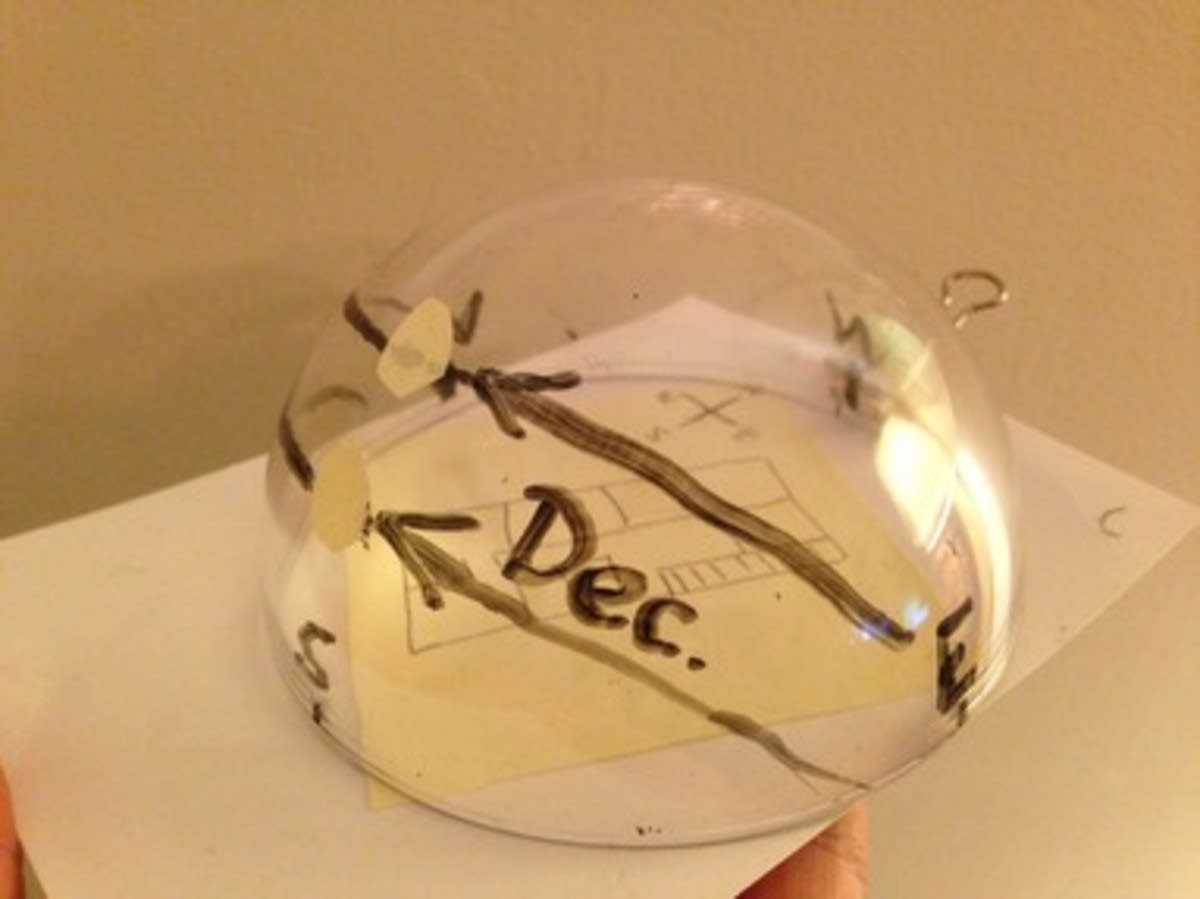

Demo: Mark a Shadow Across Weeks
Changes in the Sun's position every day add up to big changes over months. Show this by marking the shadow of a stationary object at the same time of day once a week for a few weeks. Mark the shadow of a flagpole with chalk on the blacktop or mark the shadow of the window frame with a post-it on the wall. Every week, the shadow will be in a new position.
Discussion: Spot of Light
Ask students how to position a paper towel roll to show when it is midday on the winter solstice (the day the Sun is lowest in the sky). They'll need to position the roll at a low angle so that the Sun shines directly through the tube, creating a spot of light. Ask how they would change the position of the tube to mark the summer solstice. Since the Sun will be higher in the sky, they need to raise the angle of the tube.
